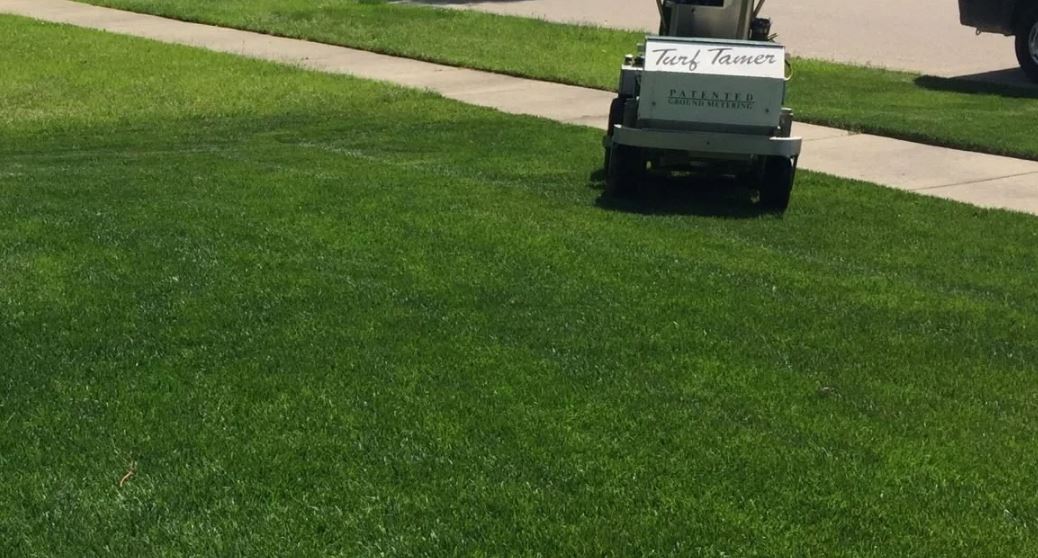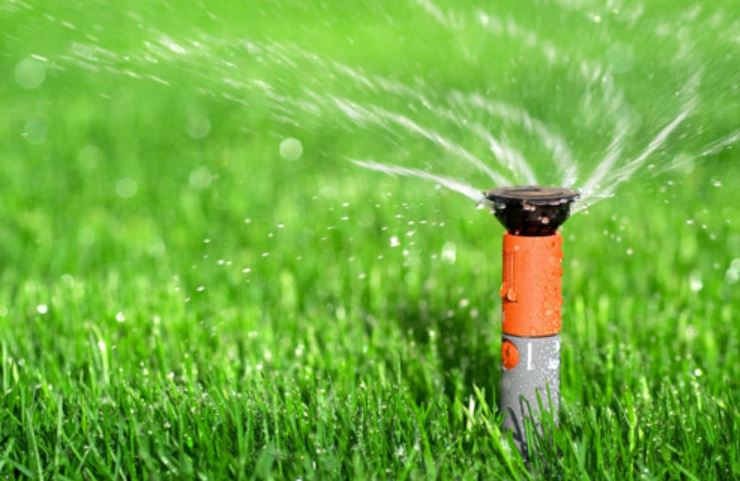You want your lawn to look lush green and beautiful. You are searching to improve its greenness. If this is the case, you’ve come to the right place!
The critical thing to do to maintain the lush greenness of your lawn is you need to feed the turf grass quite well and on a consistent basis. The key ingredient for the foliage growth of the grass is nitrogen.

When you feed the grass with nitrogen rich fertilizers, you’ll see significant growth in a short span of time. Many fertilizer manufacturers offer different varieties of products that are highly concentrated on providing this important nutrient.
There is so much opinion on developing a fertilizing schedule for a lawn. Different companies recommend various fertilizing schedule.
So to avoid confusion, we are going to have a deeper look at how to develop a lawn fertilizing schedule that is both convenient and environment friendly.
So without any further delay, let’s get started!
Developing a Lawn Fertilizing Schedule
A Traditional Fertilizer Schedule
First of all, you need to understand that the exact fertilizing schedule depends on where you live and the type of grass that is present in the area. But to get expert tips and advice, you can always approach the local agricultural or your county’s extension office. They will give you fertilizing strategies that are suitable to your needs.
The important aspect you need to note is that before using a fertilizer on your lawn, you must read the instructions carefully. If you don’t get any idea, then you can definitely approach someone at the fertilizer store to clarify your doubts.
There is a high chance that a particular fertilizer product may not be the ideal one for the type of grass present in your lawn. So it is always a good practise to clarify your doubts before you start using it.
When you use the right lawn fertilizer, the health of the grass will be preserved and you’ll have a green and beautiful lawn for sure.
- During the summer months of April and May, apply a fertilizer that is specifically made for crabgrass prevention. You can apply it once during the summer season. Crabgrass is the worst weed that can significantly damage the grass growth. So if you prevent crabgrass seed from growing into a weed during the spring season, you don’t have to battle against it in the hot summer days.
- In the month of June, go for a fertilizer that is specifically manufactured to control weed. Look for fertilizers that has herbicide component. This prevents the need to use additional weed controllers and they are most effective as well.
- In July or August, apply fertilizers that are specifically designed for enhancing the growth of the turf grass. Most of the products in this category will summer-proof your grass while also fighting against the season’s dangerous threats such as insects, heat and drought.”
- And finally in the fall season, apply fertilizers particularly made for winter. This will actually prepare your grass for the terrible days of winter and help it to retain the lush green in place.
Check also:
Challenges Involved in Following the Traditional Lawn Fertilizer Schedule
The traditional lawn fertilizer schedule is pretty popular. But it is very different from what the turf science experts recommend. Here’s why.
Applying so much nitrogen on a lawn will create a deep green growth at the top layer. But the heavy feeding of nitrogen based fertilizers will cost your lawn from getting healthy root system.
What it also means is that unnecessary weeds will get extra nourishment which will force you to apply heavier doses of weed killer to keep pace. Usually, there is a considerable difference between the time a weed killer kills unwanted weeds and the actual feeding time for a lawn. So even if you apply combination fertilizers on your lawn, the excess chemical usage may deflate the soil quality. Hence what is the solution?
The general argument by turf science experts is that you apply a pure weed killer during the optimum time for weed control and use it conservatively. On the other hand, apply pure fertilizers during the ideal time for feeding the turf grass. This will indeed reduce the over usage of chemicals on your lawn.
Best Practises to Follow when Fertilizing Your Lawn
If you really want to go on the traditional approach, then you need to keep the fertilizer application to the same level or at less than the label recommendation. Most lawn fertilizer manufacturers urge the consumers to apply heavy doses to their lawns, but the thing to note here is that normal or lighter applications also provide you similar results. And in fact, the lighter application will keep your lawn in a healthier condition.
When you plan to apply a fertilizer, always go for slow release formulation that feeds your lawn for several weeks and you should only apply them when the grass is wet and the soil is damp. This improves the observation of the nutrients by the turf grass and soil significantly.
Don’t apply fertilizers when heavy rain is expected because obviously, the fertilizer will be washed away when the actual rainfall comes.
Conclusion
We hope that this guide would have provided you a clear roadmap on how to develop a lawn fertilizing schedule. Keep your budget, your needs and the type of lawn you are working with in mind before you purchase a lawn fertilizer.
Want to include your thoughts? Put them in the comments section below!
FAQs on Preparing a Lawn Fertilizing Schedule
Why organic lawn care is important?
If you want to achieve a lush green lawn, then it is really good if you go the organic lawn care root. Even if you use fertilizers, limit the application to 3-times a year.
Incorporate light application techniques and avoid weed and feed fertilizers at all cost.
These products usually come with herbicide chemicals which are bad for both environment and the overall soil of the lawn.
Here are some organic lawn care items you can use.
- Compost.
- mulching mower.
- organic fertilizers.
Can you fertilize your lawn every 2 weeks?
No. Fertilizing your lawn twice a week leads to many problems such as excessive grass growth, lawn burn and polluted soil.
Should fertilizer be applied after mowing a lawn?
Yes, you can apply fertilizer after mowing your lawn. Just read the fertilizer instructions carefully before applying it on your lawn.



